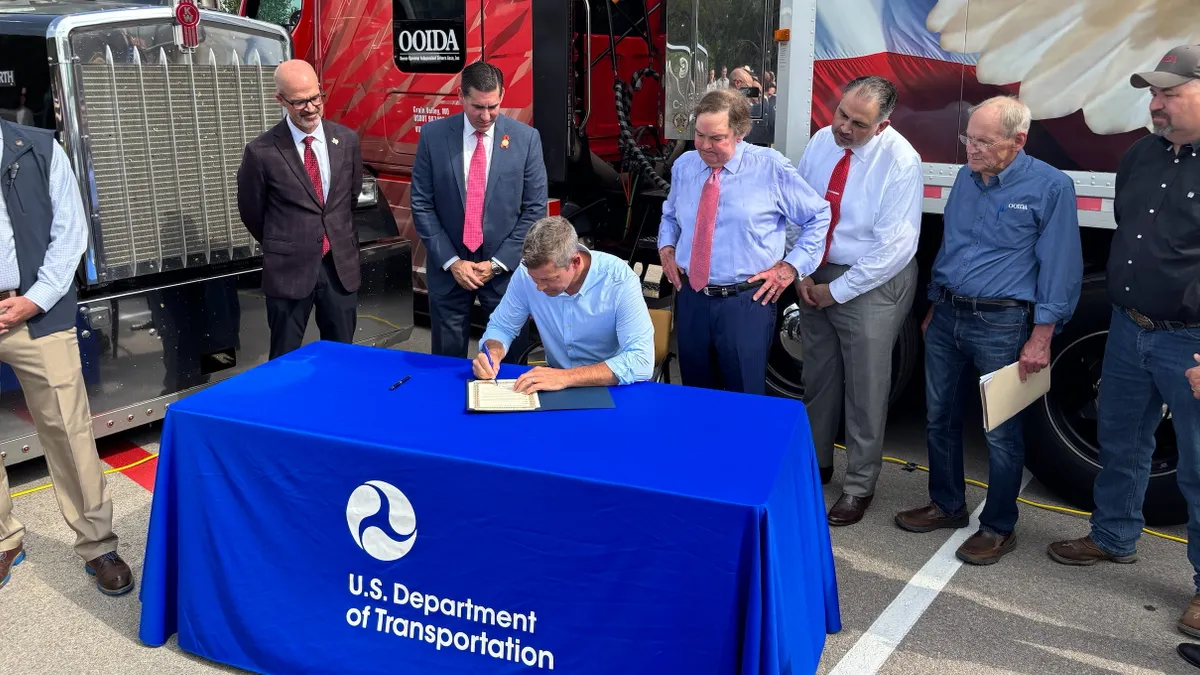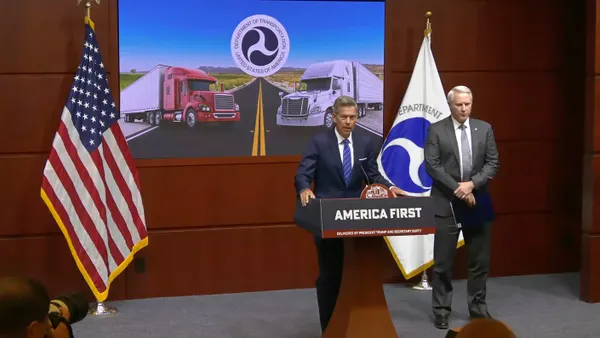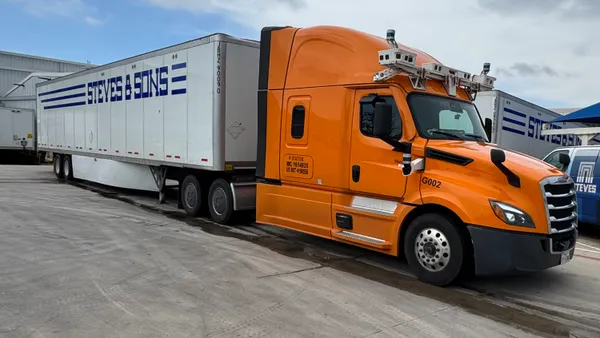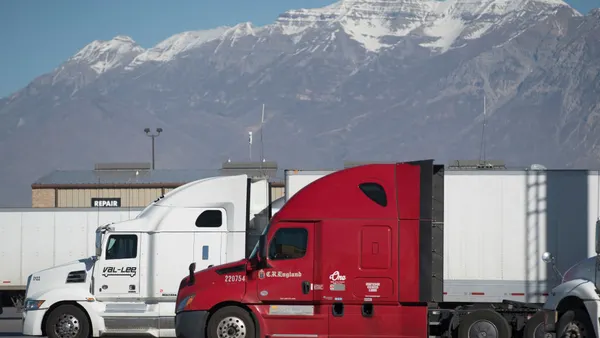A 9% discount for an annual registration fee might sound attractive, but associations are noting concerns with a system they say is flawed.
For 2024, the Federal Motor Carrier Safety Administration is proposing to reduce an annual Unified Carrier Registration fee by about 9%. The UCR Plan’s governing board makes recommendations each year on the prices, and a comment period ends on April 17.
The reduction means fees will be reduced by $4 for the smallest businesses and by over $3,400 for the largest carriers. Brokers, freight forwarders and leasing companies also pay the fee.
But regardless of the discount, a registration fee disadvantages smaller firms, being structured in a way that gives bigger breaks to bigger businesses, according to representatives with the Owner-Operator Independent Drivers Association and Western States Trucking Association.
Current and proposed registration fees per entity
| Number of units in a fleet | 2023 current rate | 2024 proposed rate |
|---|---|---|
| 1–2 | $41 | $37 |
| 3–5 | $121 | $111 |
| 6–20 | $242 | $221 |
| 21–100 | $844 | $769 |
| 101–1,000 | $4,024 | $3,670 |
| 1,001 and above | $39,289 | $35,836 |
SOURCE: FMCSA notice of proposed rulemaking.
Currently, a firm with one truck pays $41 per unit while a carrier with 10,000 pays less than $4 per truck, OOIDA Executive VP Lewie Pugh said in an email. The group has raised issues about fairness in the past and this week questioned the differences in registration fees for smaller businesses.
“In the end if you have 1 truck or 10,000 truck there is a profit margin per truck,” Pugh said. “Who’s profit margin is the government helping?”
Smaller businesses tend to pay more per unit
The fees are currently divided into six brackets based on the number of power units a firm has. A UCR Plan handbook for the program states that each bracket must be proportional, but a breakdown suggests vast differences in revenues generated between some groups.
From 2020 to 2022, businesses with three-to-five commercial vehicles and those with 1,001 units or more paid less than $16 million during those years, according to data the UCR Plan provided to the Federal Motor Carrier Safety Administration.
Meanwhile, firms with just one or two units — which surged during the pandemic — generated $22 million or more in recent years. The number of businesses in that smallest bracket jumped from around 377,000 in 2020 to over 481,000 for the 2021 registration year. Then, in 2022, the number settled back to about 377,000.
Even with the declines, smaller businesses helped drive outsized revenues. Such contributions helped give all carriers registration discounts.
Unified Carrier Registration fees are discounted when the system collects more money that’s allowed. That limit by law is $107.78 million for the 41 participating states, plus a $4.25 million administrative fee.
But when a discount is proposed, it goes across the brackets, rather than to the various smaller firms that contributed more overall. Consequently, last year’s discount reduced the fee by 31% for each bracket.
Joseph Rajkovacz, director of governmental affairs and communications for the Western States Trucking Association, also told Transport Dive that overpayments aren’t distributed back as fairly as they could be.
“I would argue there’s not a lot of equity,” Rajkovacz said.
Smaller firms generated helped lead outsized revenues during pandemic
The FMCSA has defended the system in the past. For the 2021 registration year, the agency stated that those in the first bracket were 73% of registrants but provided 23% of the revenues, whereas motor carriers in “bracket 6 (1,001 or more vehicles) were only 0.03 percent of the total registrants and provided 9.90 percent of the total revenues.”
“The fee structure satisfies the statutory requirement that it be progressive,” the agency said last September. “The fees increase as the carriers' fleet sizes increase, and the fee amounts place a proportionally larger burden on those carriers with larger fleets.”












